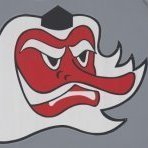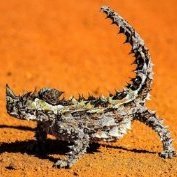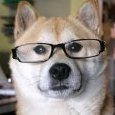Leaderboard
Popular Content
Showing content with the highest reputation on 04/01/2020 in all areas
-
.thumb.jpg.f23b2dc356f90ead35d25aa5e3609a95.jpg)
1/32 Revell He-219 A-7
Loach Driver and 14 others reacted to Dart_Schatten for a topic
Good day, friends! I want to show you my new model - revell He-219 A-7. In work I used: BigEd, BigSin, Barracuda, Master 20, 30 mm gun barrels, Profimodeller antennas, CMK seats, HGW belts, SWS crew, and DML Kettenkraftrad. I used Gunze paints and oils.15 points -
F-86K RNoAF
F-4Phanwell and 9 others reacted to Winnie for a topic
A little more progress, trying my homemade masks, and having some issues but trying to remain patient and work through it. There are also some interesting fit issues with this kit, and it will require some massive patience to assemble it... Cheers H.10 points -

KH T-6/Harvard Kicked Up A Notch: Apr 14/20: Finished!
KUROK and 8 others reacted to chuck540z3 for a topic
Thanks again everyone! Very good question, which I've already been working on. My models typically take only 2 coats of paint, like my Spitfire and Eagle in my signature below, so about 95% of the detail I have before paint can still be seen. After spraying a white undercoat on this model, I was initially concerned and then later almost devastated at how many coats of paint I needed to cover, because much of the detail was being filled with paint. After about 5 coats I set the model aside and went away for a few days, complaining to a few modeling friends that I might have screwed up the model by using the wrong paint. Thankfully, upon my return and despite the fact that I was using fast drying lacquer, much of the detail came back as the paint dried and shrunk into the panel line and rivet recesses, leaving about 80% of the detail I had before. I then carefully re-punched a few rivets, re-scribed a few panel lines and just about all of the large fastener detail was restored with my Mega Tool, bringing another 10% back, for a total of maybe 90%. Two more things- and I fully admit I'm rationalizing because there's no turning back. Many of the panel lines that you can't see very well anymore, you can't see on the real deal unless you get up close. This is especially true of the fine detail above the wheel wells at the top. Many panel lines I scribed here can only be seen at 3 feet or less on the real aircraft, which is a bit over an inch away at 1/32 scale. I can still see them if I look for them, so I'm happy enough with that. The other thing that hides detail is the bright yellow that is so hard to photograph, unless you get up real close. For example, from this shot it looks like much of the detail is almost gone. It starts to show up a little closer... Zooming in on it more (which often reveals flaws), shows that most of the detail is still intact. Cheers, Chuck9 points -
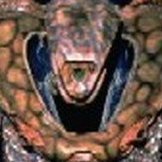
Mig-17 Mali
Paul in Napier and 7 others reacted to Kosh for a topic
Hi I present to you the start of the assembly of my first plane at 1/32. No more getting used to building Russian equipment at 1/35, I am happy with this photo montage. Be forgiving this is my first plane in at least 30 years. As I like to work on photos, I started from this one, representing a Mig-17 F taking the sun at Bamako airport. The idea is to make the Mig-17 first and then the Mig-21 Bis behind on the same diorama. At the moment I'm stuck because I can't find a conversion to convert a Mig-21 MF to a bis. I might see to change later, the idea being to present the two planes at the same time. Compared to the photo, I opened and remade the entire interior of the cockpit to bring an interesting visual on the Mig-17 I also removed the seat and left holes in the instruments to accentuate the "parts store" side After painting and adding various cables As in the photo, I opened one of the inspection hatches and reproduced as I could the interior design. The wings have been refined, there will be rivets to redo The additional tanks and landing gear are ready. opening of inspection hatches Currently I'm redoing riveting at the Rosie This is where I am currently. I think there are a lot of mistakes to fix but this is my first plane in thirty, sorry. I'm more used to building tanks. I like to work on photo and I admit that I challenge myself although it is relatively big. Hope you like it. Hope you like it.8 points -
Hello, After vintage X-1 time has come for vintage F3F-3 Of course Revell did it easiest way so...guys in Revell took and Monogram 1/32 Gulfhawk and changed engine cowling only. So we have suitable cowling and nothing more. Upper wings are too short, rear wall of cockpit has an antenna but no headrest There is no chance for acquiring correction set so I have to live with shorter wing. I don't wanna to spend few weeks scratchbuilding all that is wrong but there will be few upgrades... Cockpit has seatbelts and engine has wiring I had to scratchbuild new instrument panel because there was only decal which was...well...not enough:8 points
-
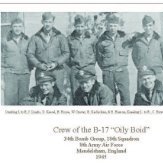
HK Models B-17 E/F backdated to a B-17D
chukw and 7 others reacted to patricksparks for a topic
Had great unplanned help today, to build a proper early B-17 you need 8 "bucket " seats, it suddenly dawned on me that when I bought the Hobbyboss B-24 over a year ago I decided to buy a full set of HK models B-17 engine sprues, for the engines, main wheels and props to supplement the B-24's looks, I remembered today that each 2 engine sprues have 2 buckets on them, now I have them all, just have to make cushions ...nice break ! Also sat down and cut the cockpit windows back to match the "D" model and cut the rest of the turret ring off the roof.8 points -

HK Models B-17 E/F backdated to a B-17D
chukw and 6 others reacted to patricksparks for a topic
I have been doing a lot of detective work on the cockpit/flight deck, I have looked at the Boeing blueprints(sorry can't post them) and I have found some things I didn't know about the early model B-17s. The rear flight deck floor is not raised higher than the later models, the rear seats are significantly lower than the pilots seats, there are raised floor panels that are mounted to the pilot's seat frames that run back to the rear seats. I wondered how someone could use the overhead observation dome if the floor wasn't higher, turns out there is a fold up step just below the bomb bay entry door. One reference clue I found about the height of the rear seats is a photo of the real "SWOOSE" flight deck it has a rear seat frame still in place, but there is a small black object mounted to the rear bulkhead and I realized that the HK kit has the same detail molded on the bulkhead, this answered a lot of speculation for me as to where the bottom of the seats end up. Not sure if the floorboards I added are 100% but it was my best guess on the length of them, I didn't see anything on the SWOOSE's rear seat frame that show extra attachment.7 points -
Any news on the Italeri Tornado GR4?
Michael931080 and 6 others reacted to Piero for a topic
waiting for the new Italeri's Tornado in 32nd... I have finished my big Revell's Tornado IDS. CIAO! Piero7 points -
I'm sure that the rivet counters and purists will be looking at the WIP with sheer horror, but it is at least reprsentative and far better than nothing at all Without removing the kit's fuse box, there is no room for the voltage regulator where Vincent has located his, so I'll just leave it off (shock horror ) and hope no one notices! I used .010 lead wire for the piping and sprayed it using Alclad II copper paint. The other parts were scrathed from styrene using Vincent's build as reference. Gary6 points
-
Kit only allows you to pose some blow in doors on the intake open but all my references for the D always show them closed on the ground and powered down. Mixed some CA and pigment and back filled the void with some tape over the top - The kit doors aren't even close to filling the gap. Fuel tanks also leave this big gaping hole with a nasty seam in. I ended up flooding it with CA and then using some scrap PE just to try and make it look presentable.5 points
-

ICM Stearman PT-17/N2S-3 Kaydet -3D renders
Out2gtcha and 4 others reacted to Troy Molitor for a topic
Wow. We are all getting spoiled by ICM lately. La-5 and Lagg 3 please!,,,,,,5 points -
I'm really having a blast with this one, going trough other build threads over here I took can't remember which one, could be Eric's or John's not sure, that one needs to lower the tip of the wing root to clear the panel located there. Well I did that and made a notch in the wing, so getting two things done at the same time, bonus for me.. Anyway here's what I mean top wing is unaltered bottom is already done. Cutting it up vertical and sanding down the bottom so the top part could be bend down to meet with the already pre bended bottom part. you get the idea. it may seem stupid but this really changes the way the wings look on the fuselage compare this picture with the first one I took it clears that panel cleanly now as shown here and the front profile is looking way better remodelling the second wing now and giving that time to dry so I can sand it back and re scribe what ever detail I lost during the process..slowly but steady she's turning in to a lightning...LOL Cheers guys till next update Frederick Jacobs5 points
-

Second project: Tamiya Spitfire Mk IXc - FINISHED
scvrobeson and 4 others reacted to Sepp for a topic
Two small steps forward: Firstly (and it really is a tiny step!), the red ball now has a home behind the canopy handle: These pics show better than the previous one that the ball really is nicely spherical. The ball ought to attach to wires that run round the outside of the canopy though various tube sections to just in front of the triangular fillet at the rear. I may, or may not, add them as (1) the smallest tube I have is 0.3mm, which looks very oversize and (2) I don't want to risk getting adhesive on the transparency and ruining it. I've left a short wire tail on the ball that runs up to the transparency just in case... we shall see. Secondly and finally, all bagged up for a white coat on the leading edges before the yellow goes on: and out from under the wraps: There's just these three very small patches to touch up where the paint came away with the Tamiya flexible tape, but nothing soul destroyingly bad: Next up: day fighter band, then serials. That is all, Sepp.5 points -

ICM I-16 Type 24
Learstang and 3 others reacted to Dennis7423 for a topic
All- Here she is, all done! This is the ICM 1/32 I-16 Type 24, completed with Eduard interior and seatbelt selts, and Armory wheels. Paint is Vallejo acrylics, with Montex masks used to complete the markings. Weathering is a mix of an acrylic wash, Tamiya weathering pastels, and MM enamels. It was an absolute treat to build, and I highly recommend it for anyone considering one of these kits! DSC_0339 by Dennis SAuter, on Flickr DSC_0345 by Dennis SAuter, on Flickr DSC_0343 by Dennis SAuter, on Flickr DSC_0341 by Dennis SAuter, on Flickr DSC_0342 by Dennis SAuter, on Flickr As always, comments and critiques are most welcome. - Dennis S. Thornton, CO USA4 points -
We're loathed to do it. Whichever way you want to reproduce the wing panels on a Mustang is contained within this thread, so therefore a personal choice. I'm flummoxed if there's anything further to be said on the subject. Time to move on.4 points
-
This is their first attempt at introducing a two stage production effort. The single design has to incorporate normal high detail into a 'basic model' to get the additional SWS all inclusive kit that we all know and love. When I first introduced them to the concept at Telford they seemed unsure whether it could work for them at the time. Now the FW190 series is the first project, I'm quite confident it will pay dividends in the market place for them. However, with everything else on the go this has obviously taken a back seat, I'm sure we won't be disappointed when they arrive though!4 points
-
Pauke! Pauke! – NIGHTFIGHTER! Me 262 B-1a/U1 Red 12
Paul in Napier and 3 others reacted to 109 for a topic
Hi, okay.... I appiled thin coats of light blue over the underpainting till I was happy with the result ... the blue is a bit more intense in the pictures than on the actual model. The green upper wing is a mockup for testing HGW wet transfers (successful!) and some RLM 82 variations ... Bye :-)4 points -
Here's your COVID19 update! Hope you are all well and keeping safe. I still have a couple of weeks work to finish my current freelance job- and then, well- I'll have a lot more modeling time. As Starlord might say, "Something good? Something Bad? Maybe a little of both?"4 points
-

HK Models B-17 E/F backdated to a B-17D
chukw and 2 others reacted to patricksparks for a topic
Following in the footsteps of LSP's own "brahman 104" I have decided to take a plunge into another overhaul, I,m planning the conversion of HK's model B-17 E/F into a B-17 "D" model. I'm starting with removing the aft fuselage from the radio compartment back, I plan on resin printing the aft end including the tail planes. So far I have removed the rear fuselage retaining the ends of the wing's fairings.3 points -

New tool for sanding.
Kagemusha and 2 others reacted to Troy Molitor for a topic
Hey LSP community, Several months ago while I was living / working in Singapore and I picked up a really useful tool at a local hobby shop. The tool is a David Union 400 linear pen sander. It's a small, handheld pen-like device which has a thumb speed control and it comes with multiple head adapters with various shaped heads. The small plastic heads use sticky-sided sandpaper which you fasten to the head, and once the pad becomes worn out you just peel the worn off pad and simply apply another new sanding pad to continue sanding. Easy. The lateral motion has a 3mm fore & aft stroke and works brilliantly. I really hate to sand wing to fuselage seems, and this tool can really get into those tight areas without destroying a lot of surrounding area. When I got back to the USA at the end of last year, I tried to convert the plug unit on my 400 sander which has provisions for a totally adaptable plug head to receive various plugs from Europe and throughout Asia, but I wanted to convert it myself. There is no US distributor for David Union, so I cut off the 220 volt head and replaced it with a US standard 115 volt head. It’s didn't go as well as my Sparmax compressor adaptation which I converted the same way, so I ended up ordering the new plug from David Union. Fast forward: In communicating with them for the proper parts, David Union Group asked me if I would be willing to sell some of their 400 sanders here in the US. I agreed, and ordered a few extra sanders with my plug adapter purchase. All the extra sanders in this first shipment come with a USA standard 110 volt wall plug. In addition to the David Union 400 lateral sander, there will be three packets of various grades of adhesive-backed sandpaper. There is a cardboard template provided which you use to cut up the various sized sanding pads to fit the multiple heads included with the sander. More than enough for a long supply of this unique sandpaper. Here's a few images and a link so you can see what I’m talking about: https://i.imgur.com/Wtl4Wgj.jpg https://i.imgur.com/gC8kxRX.jpg https://i.imgur.com/bZwOHk3.jpg https://i.imgur.com/QYpJv8i.jpg http://www.davidunion.com/search/label/DAVID%20400 https://www.youtube.com/watch?v=xfpl3OOhJOA The price is $99.00 USD for the David Union 400 sander with sandpaper assortment and adapter heads. Shipping will be extra. Rest assured that this is the standard pricing that David Union offers online. I only offered to try and sell these for them after receiving the great support with my initial inquiry. If this venture goes well, my next shipment will be thirty sanders which I can order to specific global plug in adapters for various counties. I have already sold a couple of these unique sanders to my LSP mates but I thought I’d test the waters here to see if there might be any further demand. There are a couple pointed, round-shaft adapters which you can see on the website being used to remove the multiple 3D posts on a printed part. The unique feature is the lateral 3mm-stroke motion. Several imitations are out there but they just vibrate and don’t have the lateral motion. I’ve used this sander on an He 162 wing, and soon will be put to use on my PCM Macchi C.202, too. Kind regards and happy modeling. Troy3 points -
Well, decided to start this as soon as it arrived. Going 99% OOB, addition of Eduard GBU-12's and I intend to detail the cockpit up as it's a weak spot on the kit. Photos :3 points
-
. A-10A Thunderbolt II from Trumpeter 1:32 scale The model is not the best, made as always straight from the box using a rather poor set of decals. Set: Trumpeter Decals: Trumpeter Paint: Sikkens Autowave II3 points
-
P-39 Airacobra, by Kitty Hawk
Alex and 2 others reacted to Dpgsbody55 for a topic
As promised, here's some more pictures of my Airacobra. Cheers, Michael3 points -
P-39 Airacobra, by Kitty Hawk
Azgaron and 2 others reacted to Dpgsbody55 for a topic
Yes it certainly did, and thankfully, that was the effect and shade of OD that I was looking for. One thing I didn't mention in the previous update was the gun which pokes through the spinner. P-39Q's had a shroud around the cannon and the kit part provided needed about 4mm cut off to get the correct length. On this plane, that shroud was painted, but not all were. What the kit provides for this part is not correct for a P-39Q. Here's a couple of shots of the remaining build. First, all the light went in. Then, the nose wheel went in easier than I thought, but the retraction mechanism behind it had to be glued and set first. I got the right angles here once I'd made a couple of adjustments and it lined up properly. Readers may recall that the instructions would have you install the nose wheel while the wheel well is assembled and that this is then glued into the fuselage as you assemble the two halves. I didn't like that idea, as I think it's likely to lead to the nose wheel leg braking during construction, and I still think so. So I clipped the mounting peg out so that I could slide the leg into place around the prop drive shaft. Then I glued some strips of 0.5mm flat stock into place in the wheel well just in front of where the leg mounts to give me something to glue the leg to. This was done prior to fuselage assembly. Having attached the front nose wheel door onto the leg, I then glued the leg into place and manoeuvered the actuating links into place to get the right angles. Lastly, I glued in the main wheel legs, which should be angled backwards slightly. I also added a little oil and muck staining to the rear of the radiators. Then the last remaining pieces went on, starting with the main wheels and doors, and I added some brake lines, then the nose wheel doors and the DF loop. I also flattened the bottom of the tires to simulate weight on them. Lastly, I added some exhaust staining. And at this point, it's as done as done is going to get. Naturally, I found a picture of this plane two days ago, in that book that I pictured above. Here it is. The pilot, Lt (Senior Grade) Aleksandr P. Filitov is seated front row left. The three cards illustration on the door is a reference to Pushkin's novel, "the Queen of Spades". The plane flew with the 30th Guards wing in 1944, and this unit was still operating the type until 1949. Here's my rendition of this plane. I think I've caught it reasonably well, though I wish I'd seen this picture, and the rest of the book, before I finished painting and decalling, as I'd have left the prop natural metal. I had assumed that since the plane was flown in the standard USAAF colours, then the prop would be the same. Wrong!! Overall, however, I'm pleased with the result and the kit went together very well, but test fitting parts before and after with reference to the next stage, is essential. Also, as I mentioned in an earlier update, I think the instrument panel is both too thick and located too far forward, fowling the windscreen. I'm also very glad I put some tape behind the door/windscreen gap, as this was still slightly misaligned after the glue dried. I may well build another P-39, but not in OD/neutral grey. I have an idea for an RAAF plane, if I can find a set of markings for one. Here's a few more pictures. Here's a couple of shots of the engine. Left side: Right side: Guns: And here's the cockpit. Left side: Right side: Lastly, here it is with a couple of compadres. Even though the Airacobra is a small plane, smaller than a Spitfire or 109, it seems quite large alongside other Russian fighters. Final thoughts: This is actually a very good kit and I managed to finish it much faster than I thought I would. I was also impressed with the way the decals laid down so well once dried and didn't reduce the surface detail. I'm not sure about the DF loop. Some planes had it, but most didn't. Weight in the nose is a must if you want to avoid a tail sitter. There's a couple of inaccuracies such as the tiny air intakes that go behind the doors and engine, but in fact the ones provided that go behind the engine shouldn't be there. That hole is for the inertia starter handle. The cannon barrel in the spinner is too long for a P-39N or Q. It's also a pity that KH didn't provide for a 4 bladed prop, which later Q's had, which might make the choice of subject more interesting or varied. Although I don't have another, I will buy again if I can find some markings for something very different, such as an RAAF version. P-39's didn't vary much externally, and the kit has enough parts to model anything from a D onwards. As to the length of this model being too short, I now remain to be convinced that it actually is by any discernible length. So that wraps up this build. I'll post a few more shots after this. No, if KH would just do us a model of a P-63 King Cobra... Cheers, and I hope everyone is well. Michael3 points -
all aboard! we're going for a ride again folks!3 points
-
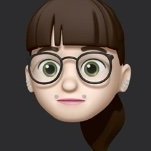
Z-M Horten on its way
Astro32 and 2 others reacted to curiouslysophie for a topic
I have this kit and a few lovely upgrades for it (yahu make a photo etch panel for it now). just working out how to have panels be removable so all that lovely internal detail can still be seen. I also want to do a more Luft ‘46 style build and have it set up as if it was in an operational unit. Might need to do some scratch building for things like the radio sets etc. I have to get my He 219 and Mosquito done first though!3 points -

Italeri TF-104G Marineflieger - final struggle
F`s are my favs and 2 others reacted to Fanes for a topic
I started working on the cockpit tubs by removing knobs and drilling holes to prep for the Anyz stuff. The more I look at pictures in the DACO book, the more I realise that the Italeri side console's layout doesn't match the F-104G. Correcting this goes beyond my scratch building skills. So I decided to not get involved and just detail what is there. The consoles in the aft cockpit are a lot better. One more thing can be seen on the right console: I scratched the cockpit light from stretched sprue, punched styrene disks and some twisted coper wire - you can compare it to what's in the kit on the left side. That's it for now.3 points -
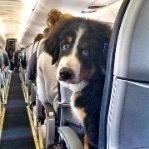
HH-60G Pavehawk Kitty Hawk 1/35 DONE!!
KiwiZac and 2 others reacted to Pete Fleischmann for a topic
Hey all- test fit test fit test fit... I can almost guarantee, that despite my best efforts, something in the cabin will likely break loose when I close up the fuselage..so far the fit is good; but characteristically “Kitty Hawk tight” cheers Pete3 points -
Some really good tips here, especially those by Ernest. I totally agree 100%. I'll add one tip: the type of brush you use to apply it makes a lot of difference too. If I want just a light dusting effect, I use a long bristled soft brush, and then blow the excess off. If you blow with your mouth, you won't get as much off, if you want more off, use an aircan. For things like exhausts, where you want a lot of the powder to stay in place, use a soft brush, but cut the bristles way back to about 1/8 or 1/16 inch, this will cause it to rub the pastels into the matte surface more. The shorter you cut them, the more it rubs in. How you apply them, and how you remove the excess makes a huge difference. These are the brushes I use the most: And, no, I don't put clear over them, ever. Tim3 points
-

EE Lightning - Echelon vacuform
Rick Griewski and 2 others reacted to mozart for a topic
Small steps, the first wheel well is finished (good enough for something that will rarely if ever be seen!): The other area I've been thinking about is the plethora of scoops and fairings on the fuselage, especially the starboard side. So yesterday I "sculpted" a couple of formers from Apoxysculpt, then today attempted the scoops using lead sheet. Quite promising first attempts, may also try in thin brass sheet since that's more resilient:3 points -

1:32 Douglas A-26 Invader from Trumpeter/Hobbyboss?
Martinnfb and 2 others reacted to Troy Molitor for a topic
This offering isn’t my cup of tea but I’m seriously looking forward to someone on LSP beating this one into a Vietnam era, WWII or Korean War work horse. We have a B-25, A-26, P-61 and we’re beating the bush to see what flys out. A game changer for me would be the B-26 Marauder. Fingers crossed!3 points -

HK Models B-17 E/F backdated to a B-17D
sandokan and 2 others reacted to patricksparks for a topic
Have cut the forward fuselage down, about 10MM needs to be removed from the length in the front. In the attached photos you can see a light pencil line running vertically on the fuselage side just in front of the wing root fillet and up on the side of the cockpit turtle deck, these 2 places is where I cut the 10MM out of the fuselage to get a "close" approximation of the corrected length for an early model B-17, plus cutting there moves the lower crew entry hatch back as well which needs to happen. In other photos I have put the new project next to an original HK "G" model to kind of show the difference in the altered length. I did a quick cad drawing of a new fuselage section and printed as an experiment, I'm not overjoyed with it yet, I have to thin out all the internal ribbing for a better scale look and also thin everything down to reduce shrinkage. I plan on doing the finished parts in "full" round sections not in halves which should keep everything completely round in section, I should end up with 3 major sections. Hopefully...3 points -

KH T-6/Harvard Kicked Up A Notch: Apr 14/20: Finished!
R Palimaka and 2 others reacted to chuck540z3 for a topic
Thanks Guys! Thanks and yes, with the yellow cap. However, this yellow paint is so translucent I used hardly any. March 30/20 It’s finally time to apply the decals, which absolutely terrified me for four reasons: 1) The only decals available for my subject are the kit ones and I don’t have back-ups, just in case I ruined one. 2) The Kitty Hawk decals in my last build of an F-5E were terrible. Registration was off and they were very thick. 3) If I do ruin a decal, sometimes you have to sand it off down to the paint. With my F-5E, this was easy with the gloss black finish. With this bright yellow bird, however, repainting would be a nightmare. 4) I could not find painting masks that were the right size and font for my subject. With insignias and flags, I needed to use some decals anyway. I fixed #1 when I bought a new kit to get canopy replacements, so that was a bit of a relief, but more on that in a bit. I also think I’m pretty good at decals and I’ve even written an article on the application of same. I’ve made every decaling mistake possible and found many solutions, for those who might be interested here: How To Apply Decals The decal sheet that comes with this kit looks a bit weird. Rather than an outline of film around each decal, there’s an irregularly shaped thick blob of some clear material that almost looks like a plastic cover, as found on HGW wet transfer decals. It is very hard to photograph, but here’s what they look like in my kit replacement. Now here’s what I received in my first kit. Again, it’s hard to photograph, but every single colored decal is flawed with a very rough finish. Thankfully the black lettering sheet was fine, but the other issue with all of the decals is that once you place them, you only have seconds to move it around or you’re done, so you better get it right quickly. I already knew about this, which had been noted in other builds of this kit, like LSP_Kevin’s. So, getting back to my decaling article above, what kind of decals are these? They are good and also bad, depending on what set you wind up with in your kit. The smooth ones in my kit replacement are generally quite thin and good, but the ones in my original kit are rough to begin with and stay rough, which creates new challenges. I started on the bottom of the model like I always do, to give me a feel for the decals before I apply them to the top, where they can always be seen. Unfortunately, the only decals on the bottom are also the hardest ones to do, because the “RCAF” lettering is so big and has lots of decal film. If you tried to apply this decal as one piece you would be doomed, due to the very short amount of time you have to move the decal into place. The best way to handle this is to cut the decal into the individual letters, removing as much decal film as possible. I also applied a thin strip of masking tape as a reference point, to keep the letters in alignment. When I applied each decal, I used lots of plain water and avoided Microset, since I didn’t want any softening of the decal until I had it in place. Once I was happy with the decal placement and removed excess water, I applied a thin coat of Microsol- and then walked away for at least 10 minutes! If you fool around with an adjacent decal while one is drying with Microsol, you are asking for big trouble, so I did some household chores for my wife and decaled at the same time. Everybody was happy! Here is the lettering after everything has dried and I applied a good coat of Tamiya X-22 to seal the decals in. You would be hard pressed to paint lettering this crisply and yes, it is on the correct wing. On other Harvards the “RCAF” is sometimes on the right wing instead, but this aircraft had it on the left wing, where the registration lettering “CF-UUU” now resides instead. Now a neat little trick I figured out, that I will use again. I always like to decal on a horizontal surface, so doing the sides of a model can be a pain with the model on my lap or a desk chair like I used in my article. Looking around the house, it struck me that a suitcase on wheels, with a bath towel shoved into an opening at the top, provided the perfect platform for this task. It holds the model securely; the towel protects the paint and I can move it around easily. Cool! As I did on the bottom, I cut out each individual letter and aligned everything on the side before I applied my first decal. I then applied a number of decals that were not near each other, gave a coat of Microsol and again walked away for 10 minutes. Done! Now a bit of a walkaround, after the decals had dried overnight and sealed in with X-22. Two and three piece decals are always tricky and cause the most problems with Microsol. You want the decal to settle into panel line and rivet detail, but you also don’t want to use too much Microsol, because the surface of the decal shrinks and reacts to it more than the backing underneath it (which is a different color). Here I have some rivet detail coming through, but the white is also starting to discolor with the blue underneath. Time to stop! The other side again…. And a quick view of the front, where I have now painted the heat shroud where the exhaust will hang with Alclad Steel and Stainless Steel Now some true confessions. For the most part, the decals from the replacement kit performed very well and I didn’t have many issues, but as usual, I had to replace two of them and repair another with parts of another decal, so it was a bit of a struggle at times. My strong suggestion is that if you use the kit decals, try to have a back-up set, which can be found from those who did not use them. I also wished I had placed one or two small decals slightly differently, but this aircraft has been repainted at least 5 times, so references are all over the place anyway. With the decals now done I’m on the backstretch of this build, but I still have many more things to do with the landing gear, antennae, tiny lights, prop, engine/exhaust installation and that damn canopy! Cheers, Chuck3 points -
Good evening, hope you had a great start into 2020! Besides family stuff (my mom suffered a stroke ... ) I actually found some time for modeling. I started the landing gear using resin replacements for the wheels ... I forgot which brand ... I somewhere read that in late war the quality of tires were really bad which made them to last for about 10 landings and take-offs. Well, the same could be said about the pilots and a/c, too. So they look a bit beaten up in my example of a tire set. Best wishes, 109er.3 points
-
as postedon ICM website superb can't wait boxart and 3d renders jan2 points
-
This is the Great Wall Hobby 1/48 SU-35S, build using Galaxy masks and decals, and painted with Mr Paint, Tamiya, and Jacquard Iridescent Teal paints. This particular aircraft was inspected by President Assad in Syria in June 2017: This is a great kit, and I look forward to building their MiG 29 at some point. Cheers, Tom2 points
-

KLP Publishing Building the WNW AEG G.IV Late in 1/32 Scale
D.B. Andrus and one other reacted to LSP_Kevin for a topic
Howdy folks, Ray has just reviewed our own Karim Bibi's eBook Build Guide for the Wingnut Wings AEG G.IV "late" kit: KLP Publishing Build Guide Series No. 1: Building the Wingnut Wings AEG G.IV Late in 1/32nd by Karim Bibi Disclaimer: KLP Publishing is my own company, though I had no involvement with this review. Enjoy! Kev2 points -
2 points
-
2 points
-
A beautiful model of a superb car , .. excellent work Many moons ago I was the secretary of a local Classic Car club , and one sunday I found my self at a meeting at Brodie Castle , just outside Elgin in the North of Scotland, and in the line of of cars was a beautiful British Racing Green XK120 drop head looking just pretty as the model . It turned out the car belonged to the Earl of Moray , and was bouht new from the factory in 1948, and had at that stage a grand total of 27000 miles on it I think I spent the rest of the afternoon staring at that car ,, just wishing! it was mine!!! Thanks for bring those memories back ! Colin R2 points
-
I always do the effects I want with pastels and Tamiya weathering chalks just before installing all the little breakable items. Of course that means I have to watch where I touch the model closely to avoid an unwanted fingerprint!2 points
-
I originally didn’t plan any new build as I was about to move. Then the lockdown law fell . A good part of my modelling stuff is already at my new home. Happily I was stuck with the better half: basic tools and... the new IBG kit. As we don’t know when the lockdown ends, I decided to give the PZL a go albeit in a rudimentary, old-school kind of way. Can be a good, refreshing thing as we modellers have been spoiled of late. Like Paul Simon sang: ‘we can’t be forever blessed’ Stay safe everybody, Cheers, Quang2 points
-
2 points
-

Revell A-400M
mustang1989 and one other reacted to chrish for a topic
Thanks for looking, not sure which scheme yet... probably Luftwaffe. I built up the engines and got myself a bit worked up because I accidentally wiped off the part numbers I had so carefully inked on to three of them. But careful deduction (got lucky) showed that two of the engines have a thick "armor" belt on one half, the half that faces the other engine so the two with "armor" must go inboard with the armor facing the outboard engine. The engine halves with "armor" at the top in this image, seams dealt with and ready to continue.2 points -
Hi all, Just finished up this one, Wingnut Wings FE.2b (Late), its taken a long time to complete, I started it in 2016, and put it on the back burner until resuming work on it around September last year. Its unbelievable how a company can kit a model like this, and lay out all the direction you need to build it.Kits like this are great value for money, with the time it takes to put one together. I dont know if James Fahey is a member here, but I would like to thank him for his reference pics, I couldn't have rigged this without them, they are a gold mine of reference. I know the British aircraft used the flat type rigging wires on their aircraft, but that was going to be too much trying to install that type of rigging on this build, so I just used normal thread, ...I used Bob's Buckles eyelets and brass tube for rigging, plus some Gaspatch turnbuckles. For some reason the wood grain on my pics always looks darker and more reddish tone than it does in person, must be my camera or lens, dont know why it does it, ....you can see it looks a bit lighter on the in progress pics I took with my Iphone All comments and critiques welcome. Thanks for looking, Cheer's, Jeff.2 points
-
Looking at the kits content I think this is either an early Fools Day joke or Hobby Boss invented a completly new modelling approach: Scratchbuilding out of the box! They should register this for trademark Regards - dutik2 points
-

1:32 Lockheed EC-121K Constellation/Warning Star
GROWLER 96 and one other reacted to Iain for a topic
Nooo - bl**dy awful things IMHO! My Lotus Turbo Esprit - otherwise known as a Constellation stand... Iain2 points -
P-39 Airacobra, by Kitty Hawk
Seversky and one other reacted to Dpgsbody55 for a topic
The last of the decals have gone on and it's now been flat coated, though I mixed a small amount of gloss in with the flat. I've used Humbrol on this and by flat, I mean flat. I also had a lot of trouble with the decals as too often, once they were on, they wouldn't move at all. This is why the "Inspection" decals are not lined up properly. Perhaps they weren't lined up at the factory too. I think it's because of the gloss coat being too glossy causing any water on the model to just run off, but (of course ) towards the end I found I could get them to move by using the wet decal paper to adjust them. Here's the lower side shots. One thing I have been wondering about now is the location of the main undercarriage mounts. Have KH repeated the same mistake as on their Texan model and located the main wheel legs a little too far inboard?? What do you think?? At present, I'm inclined to leave it alone and see how it looks with the main wheels in place, as the time to fix this would have been before the wheel wells were assembled. And here's the top sides. Most of masking has been removed, except the piece I put inside the cockpit as there's a small gap between the door and the canopy which may have allowed some splatter on the inside of the canopy during airbrushing. I haven't opened the doors yet as I don't want them flapping about during final assembly. For the same reason, I also haven't removed the masking over the exhausts. So now I move on to final assembly. I'll be starting with the lights, of which this thing seems to have as many as a Christmas tree. Then on with the undercarriage and a little more weathering and it should then be complete. Cheers all, and stay well. Michael2 points -
Hasegawa 1:48 P-40E in Finnish service
mustang1989 and one other reacted to matto21 for a topic
Evening all, Underside blue has now been shaded and highlighted using a lightened mix - completely randomly. I've also made a start on the topside, but only around the masked areas as I was concerned about the paint lifting. Needn't have worried, but sods law would've dictated differently had I left it in place! Matt2 points -
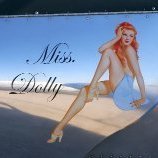
1/24 Monogram Jag XK120
mustang1989 and one other reacted to LSP_Ron for a topic
Might not be my best effort with a car but it's done and will look good in the office.2 points

